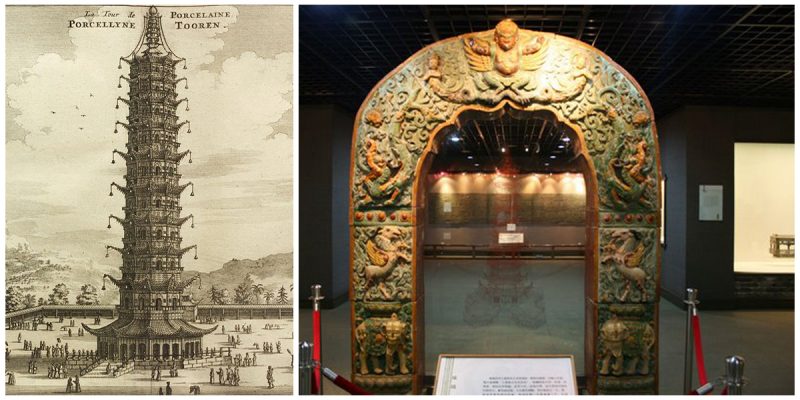Located on the South Bank of Yangtze River in Nanjing Territory in China, The Porcelain Tower (or Pagoda) of Nanjing, also known as the Bao’ensi, which literally means “Temple of Repaid Gratitude,” was one of the youngest medieval wonders of the world.
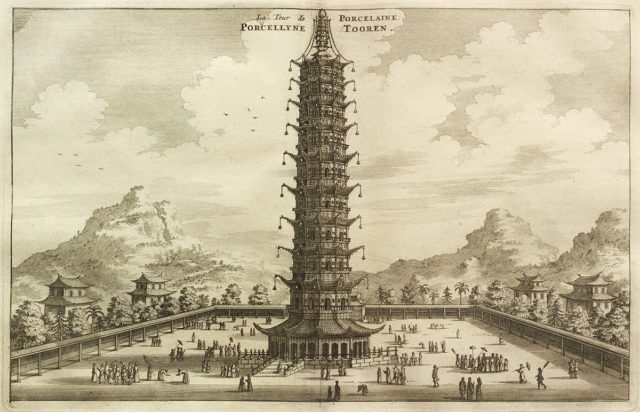
The construction of the tower started in the early 15th century, during the Ming Dynasty, right after the design was finalized during the reign of the Yongle Emperor (r. 1402-1424). It was completed in seven years. It was discovered by the western world when European travelers like Johan Nieuhof visited China, sometimes listing it as one of the Seven Wonders of the World.
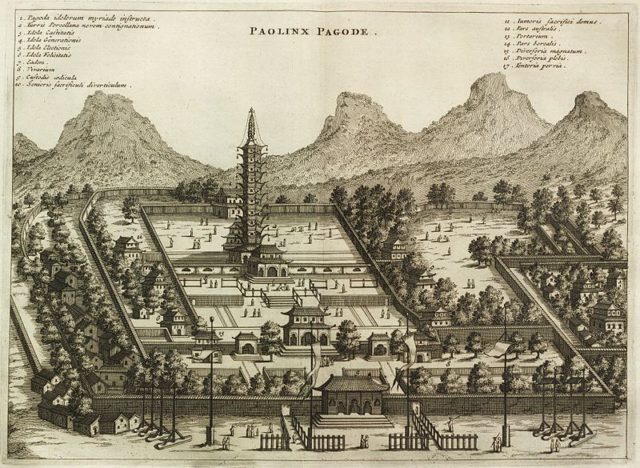
The tower rose from an octagonal base 97 feet (30m) in diameter and it was one of the largest buildings in China, rising up to a height of 260 feet (79 m) with nine stories and a staircase in the middle of the pagoda, which spiraled upwards for 184 steps. There were original plans to add four more stories, to extend the height to 330 feet (101m), but they were never realized.
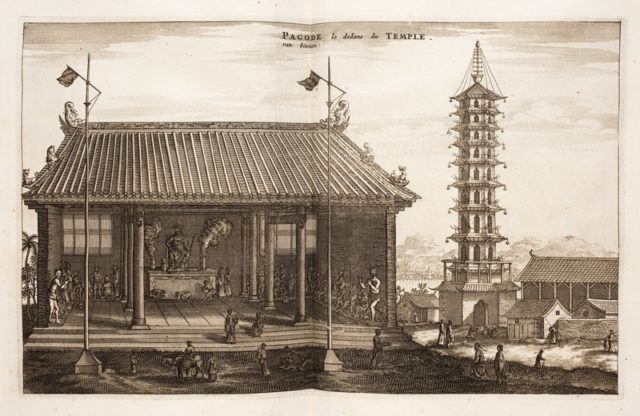
It was built with white porcelain bricks that were said to reflect the sun’s rays during the day, and about 140 porcelain lamps were used to light up the structure during the night. Glazes and stoneware were worked into the porcelain and created a mixture of green, yellow, brown and white designs on the sides of the tower, including animals, flowers, and landscapes.
The tower was also decorated with numerous Buddhist images. For some time, this tower was the tallest structure in China and it was widely considered the most beautiful. The tower quickly became an icon for the city and visitors from the West reported on its beauty when they returned to their homelands.
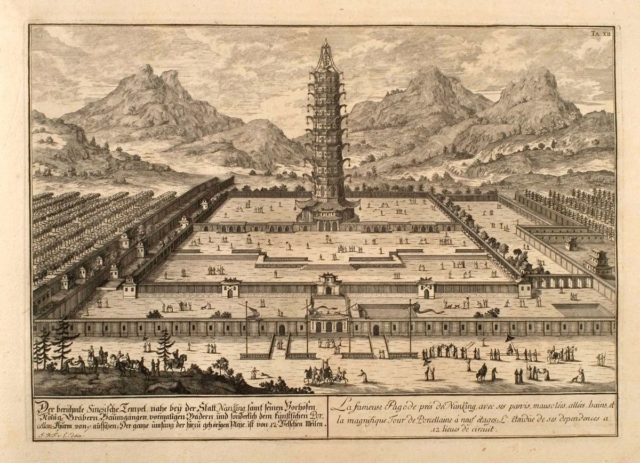
During the year 1801, it was struck by lightning and was severely damaged. The top four stories were knocked off, but it was reconstructed soon after, less than a decade after the incident. In the 1850s, the area surrounding the tower erupted in civil war as the Taiping Rebellion reached Nanjing and the rebels took over the city.
During 1986, American sailors who visited China reported that they still saw the tower standing. Not long after that, it was completely destroyed by the rebels who had superstitious beliefs about it.
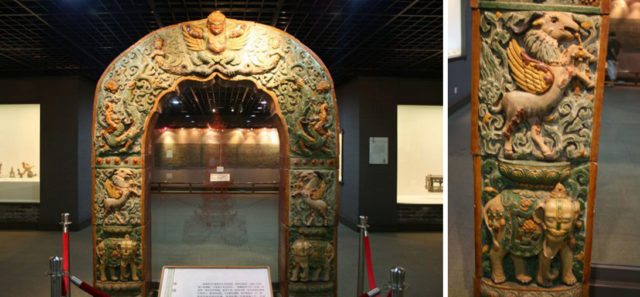
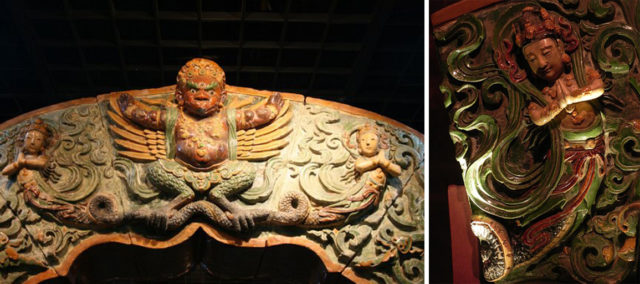
The tower only exists today in illustrations and museum miniatures. However, in 2010, Wang Jianlin, a Chinese businessman, donated one billion yuan ($156 million) to the city of Nanjing for reconstruction of this historic landmark, making it the largest single donation in the history of China.
